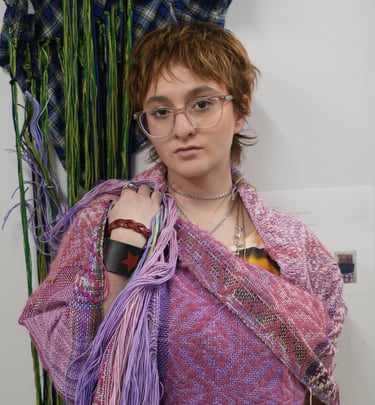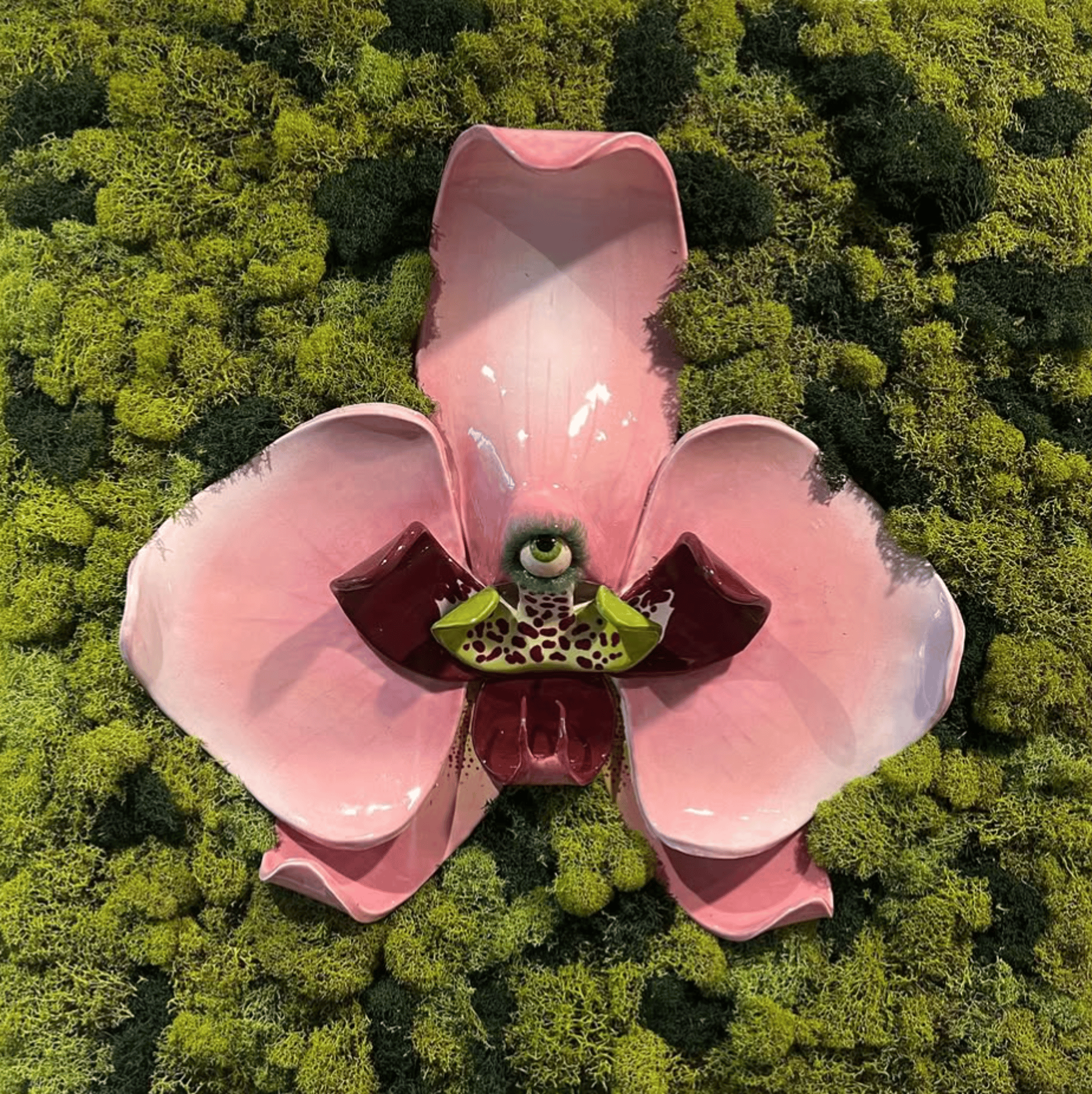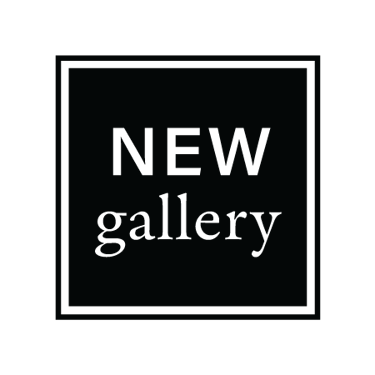
PRISMA: Blurring Form, Craft, and Identity
While studying painting at SAIC, PRISMA found herself in a troubling position: she was beginning to be bored with the limitations of painting.
Luckily for the artist, her previous experience working with fibers and a work-study position in the school’s fibers department offered her the ability to see the potential of the material as a creative vehicle. Encouraged by the work of her peers, PRISMA began experimenting independently with dyes and prints, and found that through fiber, she was able to break free of painting’s constraints.
PRISMA’s debut solo exhibition in Art City’s miar gallery provided the artist a venue to showcase these experiments. Color Coding, documents her blending of paintings and textiles while playing with color, opacity, and volume to transcend her visual language from two-dimensional form into three-dimensional textile sculptures.
Here, PRISMA discusses how she blends the two mediums, the importance of identity in her work, and what lays ahead for her artistic practice.
NEW GALLERY: Experimentation seems like a core tenant of your practice. It not only gives you joy, but produces the results you’re looking for.
PRISMA: The first couple of years of my art school journey was all about experimenting. I was trying to figure out what medium I wanted to work with and how to set myself apart. What I ended up finding was that I wanted to bridge these two warring identities into something that I could really engage with.
I wanted to make paintings to touch. Art that was visually provoking but also very tactile. I wanted to bridge the two.
The work featured in Color Coding came out of that experimentation. A lot of the work was actually stuff that I had paused and came back to later. Up on Lavender Hill, i threw glass through my bedroom window, and #32 bodies were all works that I started a full year before the show. I came back to those and asked myself: “How can I elevate these? How can I add a little bit more?” I added more weaving and quilting, I separated and I stretched them.
NG: I think we should point out how subversive this work really is. While moving away from or distorting the quote-unquote “fine art” medium of painting with the quote-unquote “craft” medium of fiber, you’re still working with a traditional subject matter: the figure. It may be abstracted, but it’s there. Can you say more about the role the figure plays in your work?
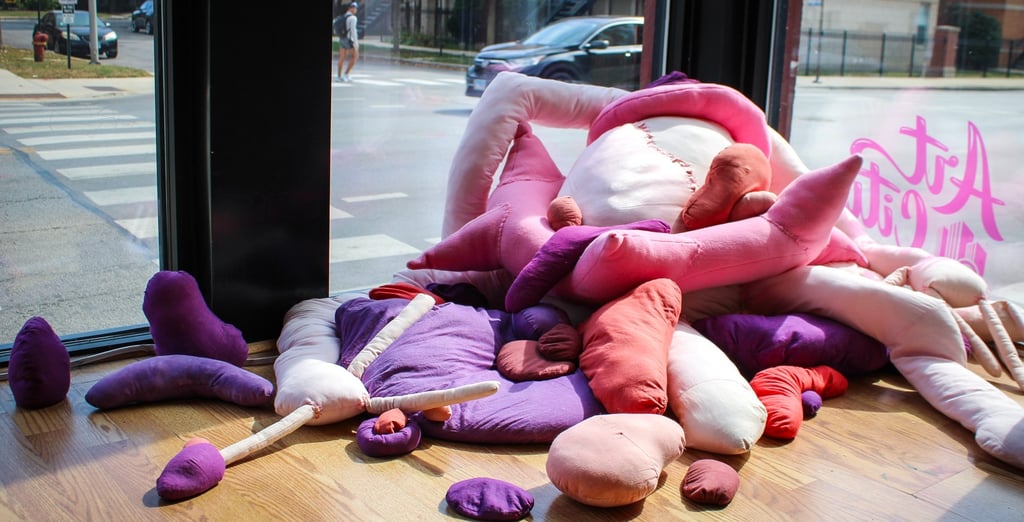

PA: It’s like a projection of doing onto the work what I cannot do onto my own body. It’s like a playground of exploring identity, and having fun while exploring a sense of self. And yes, figures are a kind of starting point in fine art. But in Color Coding, I was more interested in how to maintain the organicness of the human form while abstracting it, reducing it to portions, or zooming in on specific parts of the body. Layering figures on top of each other especially allowed me to create different silhouettes that still felt life-like somehow.
It’s also important to me as a female identifying person to portray the female figure, even when abstracted, with a sense of context. The works remain in touch with my own femininity, even if I’m embracing the areas where my experience goes beyond those traditional lines.
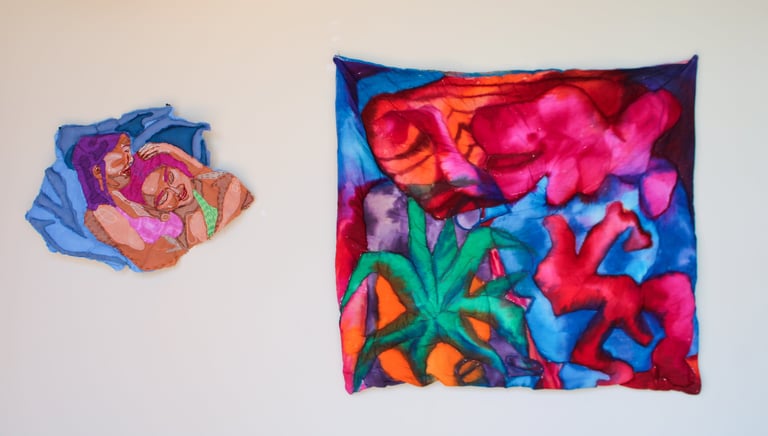

NG: Because the work focuses so heavily on investigating your identity, I imagine the opening was a very personal experience. What was that like for you?
PA: It was amazing to see work that had been in storage recontextualized in the space.
For the soft sculpture installation, I took two separate works and brought them together to make a new installation that was specific for the miar gallery. Prior to the show, this sculpture had just kind of existed in the background. But when I blended the two, they had a whole new meaning.
I think having moments like this as an artist is really important to keep us going. Especially now when some of us are wondering if there will even be spaces like this anymore, you know?
"It was amazing to see work that had been in storage recontextualized in the space... Prior to the show, this sculpture had just kind of existed in the background. But when I blended the two, they had a whole new meaning."
NG: Whether distorting a human figure into an abstracted lifeform, or morphing a piece that had been in storage into something new, each piece contains its own sense of evolution. Related to evolution, do you have a sense of what is next for your practice?
PA: I'm taking the technique from Color Coding and I'm starting to replicate my relatives' work in that technique. I’m physically recreating their art archive through craft—dye painting and quilting my own versions of their work.
I'm also looking at the genderization of craft and fine art, and seeing how I can merge the two. Especially thinking of legacy as being the first female person in my family to go to art school and to see where I fall into this lineage… How can I bring craft into this lineage? How can I bring color language into that? This new body of work is crafting myself into place by using these techniques that I learned and replicating these images that I grew up with.
Through this I am analyzing what makes a painting a painting, what makes craft craft, and what happens when the two blur together.
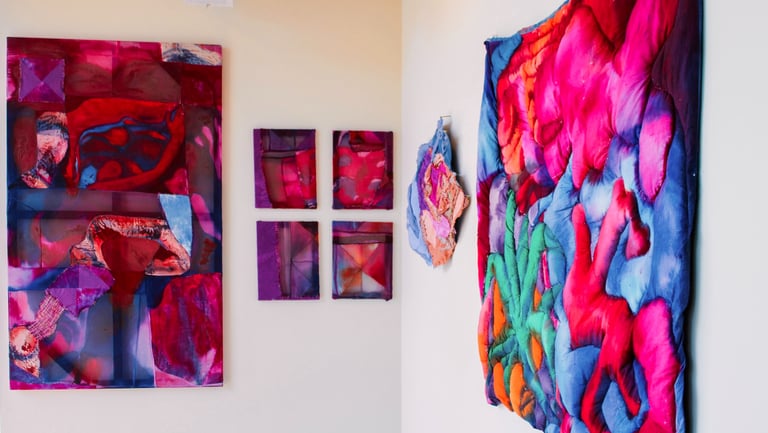

"[In my new work] I am analyzing what makes a painting a painting, what makes craft craft, and what happens when the two blur together."
"I wanted to make paintings to touch. Art that was visually provoking but also very tactile. I wanted to bridge the two."
Anna Maria Andrade, artistically known as PRISMA, is a Chicago-based mixed media artist. Born to a Honduran-Spanish father and an American mother, PRISMA combines her classic painting training with an emerging textile practice to create vibrant moments of intimacy and identity with fabric, dye, and plush. She attended Booker T. Washington High School for the Performing and Visual Arts in Dallas, Texas and will complete her BFA at the School of the Art Institute of Chicago in Spring 2026.

